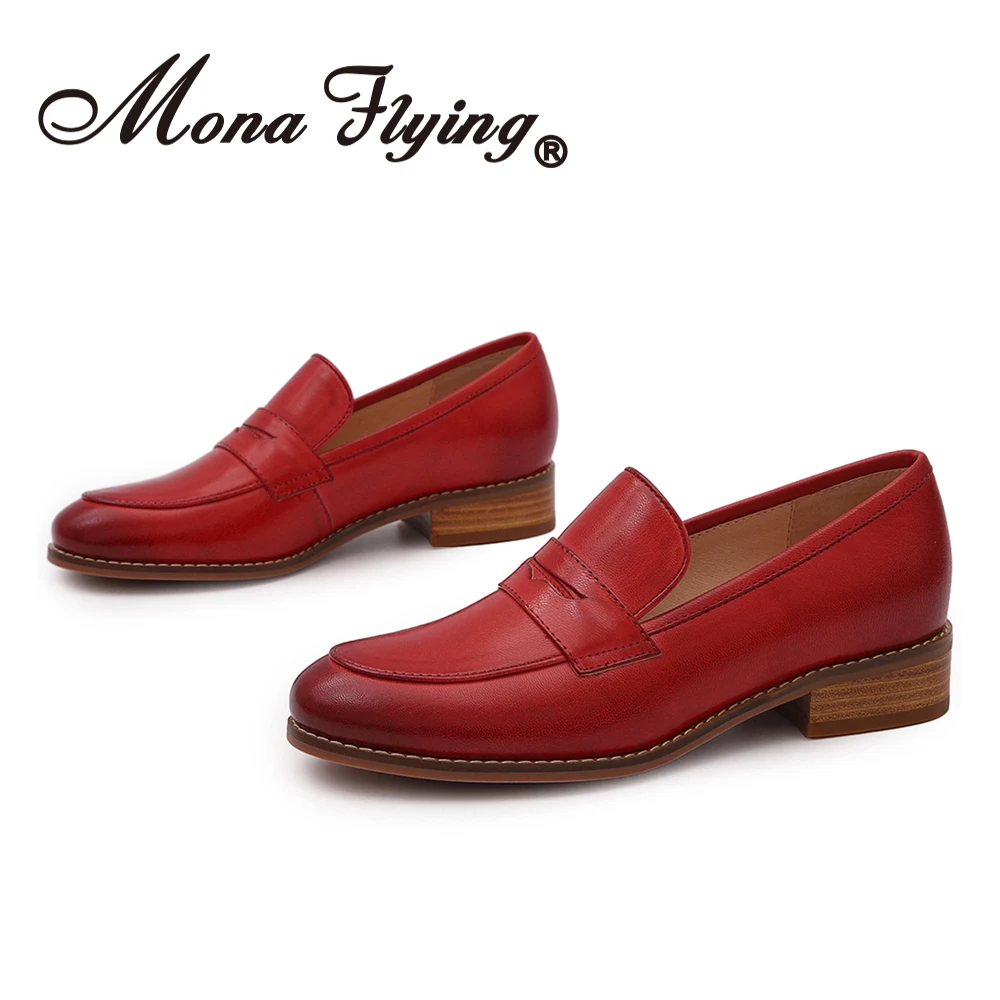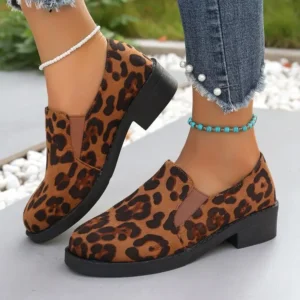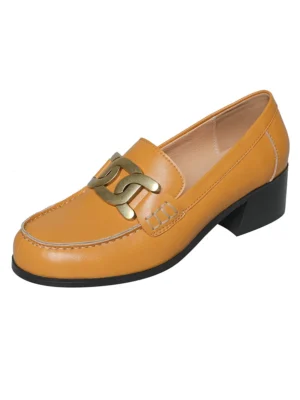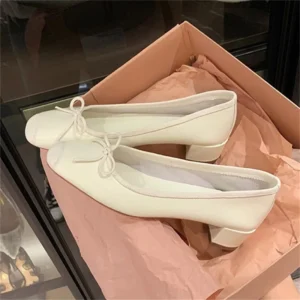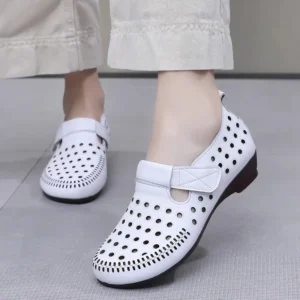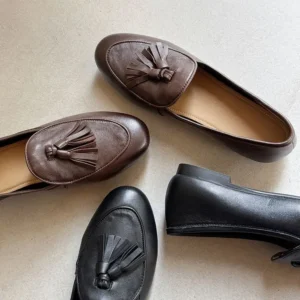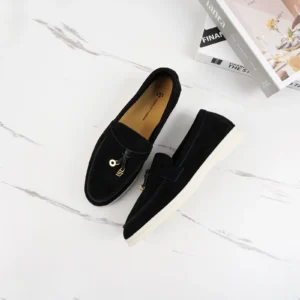Understanding Comfort in Footwear Design: Beyond the Basics
True comfort in footwear goes far beyond the simple absence of pain. It encompasses proper support, stability, and features that promote overall foot health throughout the day. When designed correctly, comfortable shoes work with your body’s natural mechanics rather than against them.
For premium footwear, the greatest challenge lies in striking the perfect balance between visual appeal and ergonomic function. This is particularly crucial for styles meant for extended wear, such as loafers, which must maintain comfort from morning meetings through evening events.
What makes this balance so important? Even the most beautiful shoe becomes unwearable if it creates pressure points, causes fatigue, or fails to support your foot’s natural structure. Understanding comfortable round toe loafers requires considering how anatomical factors, material choices, and construction techniques all contribute to creating truly comfortable footwear.
Throughout this guide, we’ll explore the science behind foot-friendly design, examining everything from the foundation of shoe architecture to the subtle finishing details that distinguish genuinely comfortable options. The footwear industry has evolved significantly over decades, moving from valuing appearance above all else to recognizing that women’s comfortable flat loafers must deliver on both style and substance to meet modern consumers’ expectations.
By the end of this article, you’ll understand the technical elements that create exceptional comfort and know how to identify quality features when shopping for your next pair of shoes.
The Architecture of Comfortable Footwear: Key Design Elements
Creating truly comfortable footwear requires a sophisticated understanding of multiple components working in harmony. Unlike mass-produced shoes that prioritize manufacturing efficiency, premium designs approach comfort as an integrated system where each element serves a specific purpose.
Foundation Components
At its core, comfortable shoe architecture balances several key elements:
- Last shape – The three-dimensional form that determines the shoe’s internal volume and proportions
- Sole system – Consisting of insole, midsole, and outsole layers that provide cushioning and support
- Upper design – The shoe’s top portion that secures the foot while allowing proper movement
- Internal structure – Hidden components that maintain shape while preventing irritation
The relationship between these elements is crucial. For instance, the most cushioned sole becomes ineffective if paired with an upper that restricts natural movement. Similarly, a perfectly shaped last loses its benefit when combined with rigid materials that don’t accommodate the foot’s changing shape throughout the day.
Balance of Structure and Flexibility
Premium foot-friendly loafer design achieves the delicate balance between providing necessary support and allowing natural movement. Areas like the toe box require sufficient space for toe splay, while the midfoot needs firmer reinforcement to maintain stability. The most sophisticated designs incorporate varying flexibility zones that mirror the foot’s natural bend points.
The difference between standard and comfort-focused approaches often comes down to thoughtful proportions and dimensions. While mass-market shoes typically follow standardized measurements, comfort-oriented women’s leather flat loafers feature subtle adjustments in width, depth, and curvature based on biomechanical research.
Foot Anatomy and Biomechanics: The Foundation of Comfort Design
Understanding foot structure provides the foundation for all comfort-focused design decisions. The human foot contains:
- 26 bones that form three distinct arches (medial longitudinal, lateral longitudinal, and transverse)
- Over 100 muscles, tendons, and ligaments that control movement and stability
- Pressure points that vary based on activity and foot shape
- Natural flexion lines where the foot bends during walking
These anatomical features explain why generic shoe shapes often cause discomfort. Different foot types—including neutral, pronated (flat), and supinated (high arch)—distribute weight differently and require specific support patterns. Approximately 60% of people have some degree of pronation, while about 20% have higher arches requiring greater cushioning.
The gait cycle further complicates design requirements. As weight transfers from heel to toe during walking, the foot changes shape, requiring shoes to flex in specific locations. Restricting this natural movement often leads to fatigue and discomfort, which is why understanding shoe toe shape dictates comfort in significant ways.
Designers must consider not only static foot shape but also dynamic movement patterns. This includes how the foot pronates (rolls inward) or supinates (rolls outward) during walking, and how these movements affect pressure distribution. The comparison between flat vs low heel comfort demonstrates how even small height variations significantly change biomechanical requirements.
The Role of the Last: Shaping the Perfect Fit
The last—a three-dimensional form that determines a shoe’s internal shape—is arguably the single most important element in comfort design. Think of it as the invisible architecture around which the entire shoe is built.
Anatomically correct lasts mirror the foot’s natural contours rather than imposing artificial shapes. The difference becomes immediately apparent when comparing premium and mass-market footwear. While fashion-focused lasts often narrow the toe area to create a sleek appearance, comfort-oriented designs provide adequate volume for the toes to spread naturally during standing and walking.
The toe box shape and volume are particularly crucial elements. Round toe vs pointed toe shoes demonstrate this difference clearly—pointed designs compress the toes into an unnatural position, while properly designed round toe flat loafers accommodate the foot’s natural width.
Creating the perfect last involves balancing universal fit principles with adaptations for different foot shapes. Premium manufacturers often develop multiple width options or use sophisticated design techniques that accommodate various foot volumes within a single style. This attention to the last’s proportions explains why some shoes feel immediately comfortable while others never quite adapt to your foot.
Intelligent Sole Systems: Engineering Support from the Ground Up
Insole Design
The insole forms the critical interface between foot and shoe, directly affecting weight distribution and pressure points. Anatomically contoured footbeds that mirror the foot’s natural arches provide significantly better support than flat insoles. Premium designs often feature:
- Metatarsal pads that relieve pressure under the ball of the foot
- Heel cups that center the heel bone for proper alignment
- Gradually sloping arch support that distributes weight evenly
- Breathable materials that manage moisture and temperature
Midsole Engineering
The midsole acts as the primary comfort layer, absorbing impact and returning energy during walking. This component largely determines how the shoe feels underfoot. Advanced midsole systems incorporate:
- Varying densities that provide firmer support where needed and softer cushioning in high-impact areas
- Energy-return materials that reduce fatigue during extended wear
- Anatomically placed flexibility zones that allow natural foot movement
- Graduated thickness that maintains proper foot positioning
Outsole Construction
The outsole must balance traction, durability, and flexibility. Comfort-focused designs feature:
- Traction patterns aligned with weight distribution during walking
- Strategic flex grooves positioned at the foot’s natural bend points
- Wear-resistant materials in high-abrasion areas
- Shock-absorbing properties in the heel and forefoot
The perfect fit toe shape comfort depends heavily on how these sole components work together. When properly engineered, the sole system provides stability without restricting movement, cushioning without instability, and durability without excess weight.
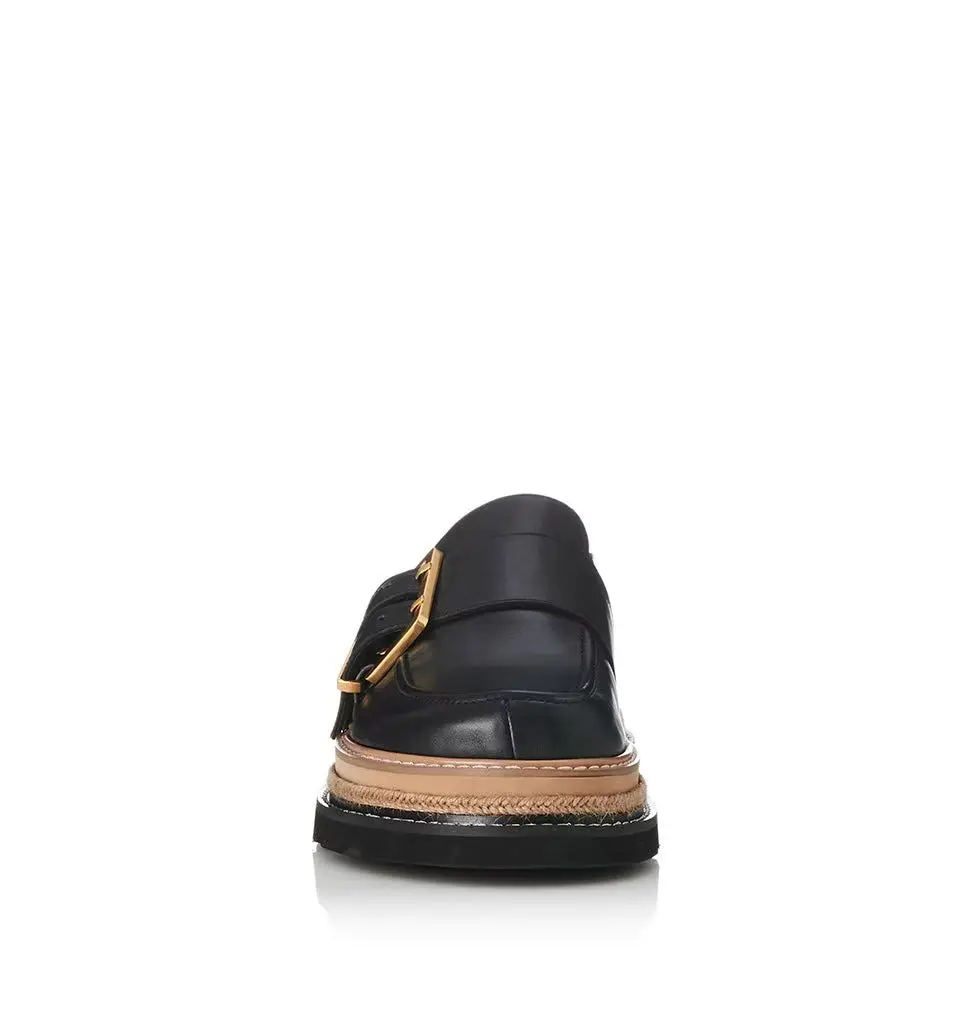
Material Science in Comfort Footwear: Choosing the Right Components
Material selection significantly influences both immediate comfort and how a shoe performs over time. Premium footwear designs carefully consider each material’s properties and how they interact with foot movement.
Natural leathers, particularly those used in women’s leather penny loafers, offer unique comfort benefits. Quality leather conforms to the foot’s shape over time, creating a semi-custom fit. It also provides superior breathability by absorbing and releasing moisture, helping maintain ideal foot temperature and reducing friction.
| Material | Comfort Properties | Best Applications |
|---|---|---|
| Full-grain leather | Excellent breathability, conforms to foot, durable | Upper material for all-day wear |
| Memory foam | Superior cushioning, pressure distribution | Insole component for standing comfort |
| Cork | Molds to foot shape, natural shock absorption | Midsole material for customized support |
| Microfiber lining | Reduces friction, manages moisture | Interior lining for blister prevention |
| Natural rubber | Flexibility with structure, excellent shock absorption | Outsole component for walking comfort |
The interaction between materials significantly affects overall comfort. For instance, a breathable leather upper loses its effectiveness when paired with synthetic linings that trap heat. Similarly, advanced cushioning materials provide little benefit if surrounded by rigid components that restrict their compression.
Premium comfort design often combines traditional natural materials with innovative synthetic components to maximize benefits. This balanced approach delivers the breathability and adaptability of natural materials with the precise performance characteristics of modern comfort technology.
Upper Design for Maximum Comfort: Form Meets Function
The upper portion of footwear plays a crucial role in comfort by securing the foot while accommodating its natural movement and shape changes throughout the day.
Key elements of comfort-focused upper design include:
- Proper toe box dimensions allowing natural toe splay during standing and walking
- Strategic seam placement that avoids pressure points and irritation areas
- Collar and tongue padding that prevents chafing without restricting ankle movement
- Flexible panels in areas where the foot expands during extended wear
- Smooth interior finishing that eliminates potential irritation points
Common upper design flaws that cause discomfort include tight toe boxes that compress the toes laterally, seams that cross pressure points, and inflexible materials that don’t accommodate foot expansion during the day. Premium designs address these issues through thoughtful pattern engineering that places seams away from sensitive areas and incorporates expansion zones where needed.
The benefits of essential benefits round toe loafers become apparent in upper design, where the rounded shape provides adequate volume for natural toe positioning without compromising aesthetic appeal. This approach prevents common issues like bunion formation, nerve compression, and toe crowding that can result from poorly designed uppers.
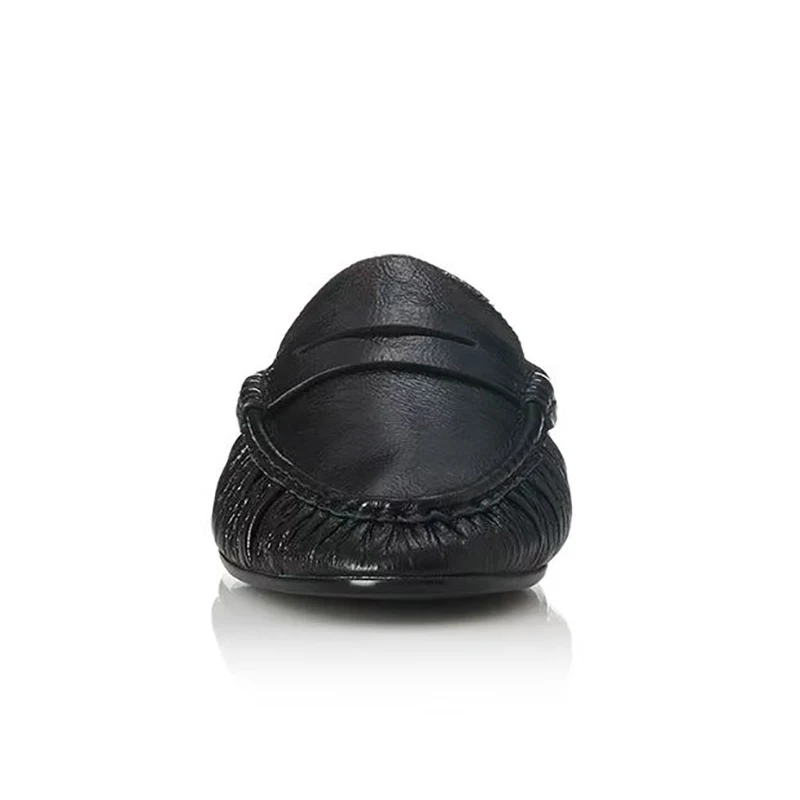
Construction Techniques That Enhance Comfort
How a shoe is assembled significantly impacts its comfort, flexibility, and long-term performance. Different construction methods create distinct comfort characteristics:
Strobel Construction creates highly flexible footwear by stitching a fabric sock to the upper, which is then cemented to the outsole. This technique allows for lightweight, immediately comfortable shoes but may provide less structured support than other methods.
Board Lasting involves attaching the upper to a firm fiberboard foundation, creating more rigid support. While traditionally less flexible, modern comfort-focused board lasted shoes incorporate strategic flexibility zones to balance support and movement.
Hand-sewn Construction, often featured in premium women’s low heel loafers, involves directly stitching the upper to the sole, creating a secure attachment that molds to the foot while allowing natural flexion. This labor-intensive technique creates footwear that adapts exceptionally well to individual foot shape.
Internal reinforcements require careful engineering to maintain structure without creating rigidity or pressure points. Premium comfort construction uses:
- Thermoplastic heel counters that provide support while flexing with movement
- Graduated toe reinforcements that protect the foot without restricting toe splay
- Strategic side reinforcements that maintain shape while allowing expansion
Finishing techniques also significantly impact comfort. Fully wrapped edges, padded collars, and careful attention to interior seams prevent the irritation often found in less thoughtfully constructed footwear.
How to Recognize Quality Comfort Features When Shopping
When evaluating footwear for comfort quality, look beyond marketing claims to assess specific design elements and construction details:
Visual indicators of comfort-focused design:
– Toe box shape that mirrors natural foot width
– Moderate heel height with stable base
– Visible cushioning systems without excess bulk
– Quality stitching with consistent spacing
– Smooth transitions between upper and sole components
Tactile assessment techniques:
– Press the insole to evaluate cushioning rebound
– Flex the shoe at the ball of the foot to check for natural bend points
– Twist gently lengthwise to test for appropriate torsional stability
– Feel inside for smooth finishing and absence of rough edges
– Check weight balance between left and right shoes
Red flags suggesting compromised comfort:
– Visible glue excess at material junctions
– Rigid inflexibility in the forefoot area
– Irregular stitching patterns suggesting poor quality control
– Extremely lightweight construction lacking substantial cushioning
– Significant difference in flexibility between left and right shoes
When trying on women’s flat classic loafers or any comfort-focused footwear, pay attention to immediate pressure points, heel security, and whether your toes can move naturally. Quality comfort footwear should feel good immediately—the myth that uncomfortable shoes will “break in” to become comfortable rarely proves true with properly designed footwear.
Common Comfort Challenges and Their Design Solutions
Q: How can footwear design accommodate high arches?
A: High arches require additional midfoot support to distribute weight evenly. Quality designs incorporate contoured arch support that makes contact with the midfoot without applying excess pressure. Materials with gradual compression provide support while adapting to the foot’s unique shape.
Q: What design elements help accommodate wide feet?
A: Wide feet benefit from roomier toe boxes, particularly in finding comfortable stylish round toe loafers that provide adequate width without excess length. Pattern engineering that places expansion panels at the widest part of the foot allows the shoe to accommodate broader dimensions without losing structural integrity.
Q: How do designers prevent heel slip?
A: Effective heel counter design creates a secure pocket that holds the heel without pinching. Premium footwear often features slight padding around the heel collar and precisely calculated heel cup dimensions that secure the foot while allowing natural movement during walking.
Q: What solutions exist for bunion accommodation?
A: Bunion-friendly design incorporates flexible panels or softer materials at common pressure points. Advanced pattern engineering positions seams away from sensitive areas, while styles with rounded or square toe boxes provide additional width where needed most.
Q: How is all-day standing comfort addressed through design?
A: Extended standing requires exceptional shock absorption and weight distribution. Multi-layer cushioning systems with varying densities support different foot regions while preventing compression fatigue. Strategic arch support reduces muscle strain during prolonged standing periods.
The Evolution of Comfort Technology in Footwear Design
The journey toward truly comfortable footwear design has evolved significantly over time:
Early 20th Century: Comfort primarily meant adequate sizing with minimal consideration for biomechanics. Shoes were often stiff, requiring extensive breaking in, with comfort sacrificed for durability and appearance.
1950s-1960s: Introduction of cushioning materials beyond leather and cork. Early synthetic foams appeared, though they often compressed quickly and provided inconsistent support.
1970s-1980s: Growing focus on athletic shoe comfort influenced mainstream footwear. Biomechanical research began informing design, with arch support and shock absorption becoming recognized priorities.
1990s-2000s: Advanced materials revolutionized comfort possibilities. Computer-aided design enabled more precise anatomical shaping, while memory foams and gel cushioning systems provided targeted support.
Current Innovation: Today’s comfort technology integrates digital foot scanning, pressure mapping, and custom manufacturing. Modern supportive wedge shoes daily comfort incorporate materials engineered at the molecular level to provide specific performance characteristics.
The most successful modern comfort designs blend traditional craftsmanship with technological innovation. Hand-stitching techniques perfected over centuries now complement computer-designed components, creating footwear that honors traditional quality while embracing modern comfort science.
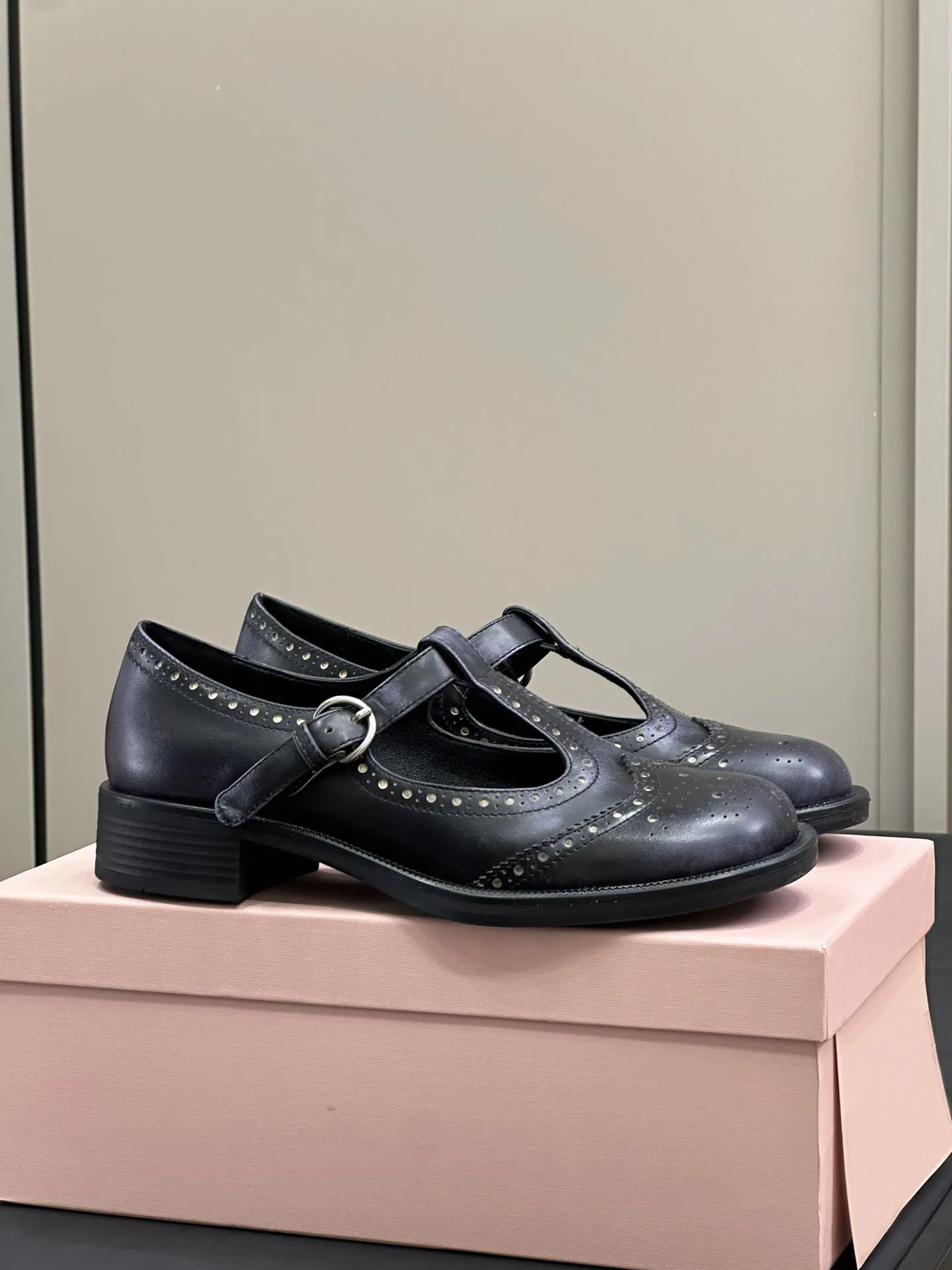
Balancing Style and Comfort: Design Strategies That Achieve Both
The notion that comfortable shoes must look clunky or orthopedic is thoroughly outdated. Today’s premium footwear designers employ numerous strategies to create visually appealing shoes without sacrificing comfort:
Strategic use of visual lines draws the eye to create the perception of sleekness without actually narrowing the toe box. This optical technique allows women’s monk strap loafers and other styles to maintain adequate interior volume while appearing refined and elegant.
Material selection plays a crucial role in balancing aesthetics and comfort. Supple leathers with natural stretch accommodate foot movement while maintaining a polished appearance. Similarly, multi-density sole systems can be engineered with visible portions designed for aesthetic appeal while hidden layers provide technical comfort functions.
Color blocking and material combinations can create visual interest that draws attention away from comfort-necessary volume. By strategically placing darker colors at the sides and lighter tones on top, designers create footwear that appears slimmer without sacrificing interior space.
The most successful comfort-luxury designs embrace their comfort features rather than disguising them. Subtle details like perforation patterns serve both ventilation and decorative purposes, while precision stitching highlights quality construction that enhances both appearance and comfort.
Common Misconceptions About Comfort in Footwear Design
Myth: “Breaking in should hurt.”
Reality: Properly designed footwear should be comfortable immediately. While leather footwear will adapt to your foot shape over time, initial pain indicates poor fit or design. Quality comfort footwear flexes where your foot naturally bends and provides adequate space from the first wearing.
Myth: “Softer always means more comfortable.”
Reality: Extremely soft, unsupportive footwear often leads to fatigue and pain over extended wear. Proper comfort design balances cushioning with structure to support natural foot mechanics. Too-soft shoes can actually increase muscle strain as your foot works to create stability.
Myth: “Flat shoes are always more comfortable than heeled styles.”
Reality: Zero-drop designs aren’t universally more comfortable. Many people benefit from slight elevation (½-1 inch) that reduces Achilles tendon strain. Comfortable round toe loafers with minimal heel lift often provide better all-day comfort than completely flat designs.
Myth: “Heavier shoes provide better support.”
Reality: Advanced materials have made lightweight, supportive footwear possible. Weight is no longer a reliable indicator of support quality. Well-engineered lightweight designs can provide excellent stability while reducing fatigue from carrying excess shoe weight.
Myth: “Comfort design is only for orthopedic shoes.”
Reality: Modern comfort engineering seamlessly integrates into fashionable designs. Premium brands incorporate sophisticated comfort features into stylish silhouettes without sacrificing aesthetic appeal, proving that comfort and style are complementary rather than contradictory goals.
Will This Shoe Be Comfortable? A Practical Assessment Guide
When evaluating potential footwear purchases, these simple tests can help determine comfort quality:
The Bend Test: Hold the shoe at toe and heel, then bend gently. It should flex at the ball of the foot (where your toes bend) but resist flexing in the arch area. Excessive rigidity or bending in the wrong places indicates poor comfort design.
The Twist Test: Holding both ends of the shoe, attempt a gentle twist lengthwise. Some resistance indicates proper stability, while too much rigidity or excessive twisting suggests inadequate support for walking.
The Pressure Test: Press your thumb into the insole and midsole at various points. Quality cushioning will compress then rebound quickly, while poor materials either won’t compress or will remain compressed, indicating they’ll flatten quickly with wear.
Interior Inspection: Run your hand inside to detect any rough seams, sharp edges, or irregular textures that might cause irritation. Quality comfort footwear features smooth interior construction with minimal seaming in pressure-sensitive areas.
Weight Distribution: Hold a shoe in each hand to assess balance. Properly designed women’s square toe flat loafers and other styles will have consistent weight distribution between left and right, with neither feeling noticeably heavier or differently balanced.
Women's Comfortable Flat Loafers, Women's Leopard Print Loafers, Women's Low Heel Loafers
$82.50 Select options This product has multiple variants. The options may be chosen on the product pageWomen's Block Heel Loafers, Women's Heeled Penny Loafers, Women's Monk Strap Loafers
$194.04 Select options This product has multiple variants. The options may be chosen on the product pageWomen's Block Heel Loafers, Women's Square Heel Loafers, Women's Square Toe Flat Loafers
Price range: $73.61 through $86.41 Select options This product has multiple variants. The options may be chosen on the product pageWomen's Comfortable Flat Loafers, Women's Leather Flat Loafers, Women's Round Toe Flat Loafers
$124.88 Select options This product has multiple variants. The options may be chosen on the product pageWomen's Black Flat Loafers, Women's Black Penny Loafers, Women's Classic Tassel Loafers
$194.28 Select options This product has multiple variants. The options may be chosen on the product pageWomen's Loafer Mules, Women's Suede Flat Loafers
$190.23 Select options This product has multiple variants. The options may be chosen on the product page
The Environmental Aspect: Sustainable Comfort Design
Sustainability and comfort can go hand-in-hand with thoughtful design approaches. Natural materials often provide exceptional comfort properties while reducing environmental impact. Cork, for example, offers natural shock absorption and gradually molds to the wearer’s foot while being renewable and biodegradable.
The durability aspect of quality comfort footwear inherently supports sustainability goals. Shoes designed with proper support and quality materials last significantly longer, reducing the number of pairs discarded over time. This longevity aspect makes investing in higher-quality comfort footwear both economically and environmentally sound.
Innovative eco-friendly materials are increasingly delivering comfort benefits previously only available from synthetic options. Plant-based cushioning foams derived from castor beans or algae provide responsive cushioning with reduced petroleum dependence. Similarly, women’s suede flat loafers using water-based adhesives and vegetable-tanned leathers reduce chemical impact while maintaining comfort properties.
When considering the value proposition of sustainable comfort footwear, it’s important to evaluate cost-per-wear rather than just initial purchase price. Higher-quality sustainable options typically deliver longer useful life and better day-to-day comfort, offsetting their higher initial investment over time.
Future Trends in Comfort-Focused Footwear Design
The future of comfort footwear design looks promising with several emerging technologies and trends:
- 3D-printed midsole components customized to individual pressure maps
- Adaptive cushioning materials that respond differently based on activity level
- Smart footwear that monitors gait patterns and suggests optimizations
- Biomechanically engineered flexibility zones based on artificial intelligence analysis
- Self-regulating temperature and moisture management systems
Digital fitting technologies are rapidly evolving, allowing more precise matching of footwear to individual foot characteristics. Virtual try-on capabilities, combined with pressure mapping and gait analysis, will enable better selection even when shopping online.
Material science continues advancing comfort possibilities through:
– Gradient density foams that provide different support levels within a single component
– Temperature-responsive materials that adjust cushioning based on activity level
– Advanced breathable membranes that enhance moisture management while maintaining protection
– Biodegradable support structures with performance matching synthetic alternatives
Consumer expectations are increasingly driving comfort innovation, with comfort now viewed as a non-negotiable aspect of premium footwear rather than an optional feature. This shift positions comfort engineering as a central design consideration rather than an afterthought.
At Artisan Haul, we remain committed to curating footwear that exemplifies the perfect balance of sophisticated comfort engineering and timeless style, ensuring every step you take is supported by thoughtful design and quality craftsmanship.

